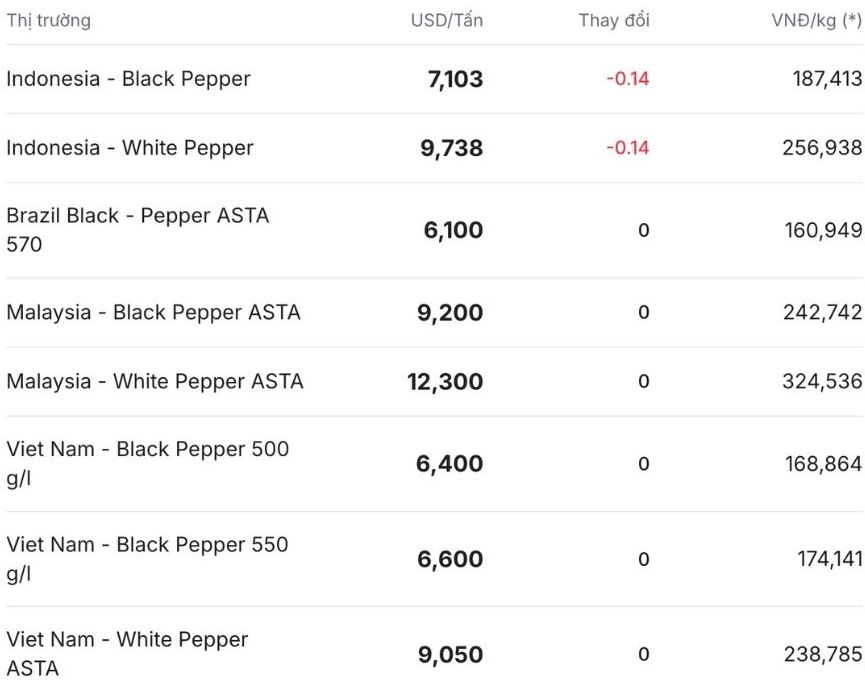Domestic pepper prices: Continue to decrease
As of 11:30 today (November 13), the domestic pepper market has decreased in price, averaging 144,700 VND/kg. Currently, the price ranges from 144,000 - 145,500 VND/kg.
After a series of stable days, key areas have simultaneously reduced prices by 500-1,000 VND/kg. The price list on the market in key areas is as follows:
Ho Chi Minh City and Dong Nai recorded the sharpest decrease of VND 1,000/kg, launched on the market at VND 144,000/kg.
Gia Lai, Dak Lak and Lam Dong have adjustments lower than VND 500/kg, listed in the range of VND 144,500 - VND 145,500/kg respectively.
World pepper prices: Developments in the same direction
In the world market, pepper prices are mostly stable in the regions. In particular, the Indonesian exchange - one of the most vibrant markets - reversed and decreased prices. Currently, these two items have both decreased by 0.14%, trading in the range of 7,103 - 9,738 USD/ton (equivalent to 187,413 VND/kg - 256,938 VND/kg).
On the other hand, the Brazilian market is flat, currently holding at 6,100 USD/ton (about 160,949 VND/kg). In the same direction, black and white pepper remained unchanged, trading at 12,300 USD/ton and 9,200 USD/ton.
In the pepper export market of Vietnam, the price of black pepper of 500 g/l and 550 g/l is flat, anchored at 6,400 - 6,600 USD/ton. ASTA white pepper prices remain high, currently standing at 9,050 USD/ton (equivalent to 238,785 VND/kg).

Assessment and forecast
Many experts predict that domestic pepper prices may increase again in the last two months of the year when global import demand increases sharply to serve the Christmas and New Year holiday season. World purchases during this period typically increase by 10-15% compared to previous months, while domestic supply is running low and the new harvest has not yet begun.
According to data from IPC and the Center for Industrial and Trade Information (VITIC - Ministry of Industry and Trade), the pepper market in early November 2025 recorded mixed developments between producing countries. Vietnam stands out with the trend of domestic prices continuing to increase thanks to stable demand - limited supply, while export prices remain balanced, reflecting the stable state of the market.











